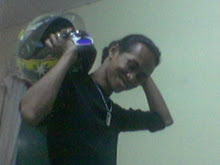A Café racer, originally pronounced "caff" (as in Kaff) racer, is a type of motorcycle as well as a type of motorcyclist. Both meanings have their roots in the 1960s British counterculture group the Rockers or the Ton Up Club, although they were also common in Italy and Germany, amongst Italian as well as German motorcycle manufacturers and other European countries.
Rockers were a young and rebellious Rock and Roll counterculture that wanted a fast, personalised and distinctive bike to travel between transport cafés along the newly built arterial motorways in and around British towns and cities. The goal of many was to be able to reach 100 miles per hour (called simply "the ton") along such a route where the rider would leave from a cafe, race to a predetermined point and back to the cafe before a single song could play on the jukebox, this was called record-racing. They are remembered as being especially fond of Rockabilly music and their image is now embedded in today's rockabilly culture.
personalised and distinctive bike to travel between transport cafés along the newly built arterial motorways in and around British towns and cities. The goal of many was to be able to reach 100 miles per hour (called simply "the ton") along such a route where the rider would leave from a cafe, race to a predetermined point and back to the cafe before a single song could play on the jukebox, this was called record-racing. They are remembered as being especially fond of Rockabilly music and their image is now embedded in today's rockabilly culture.
The cafe racer is a motorcycle that has been modified for speed and good handling rather than comfort. Cafe racers' bodywork and control layout typically mimicked the style of contemporary Grand Prix roadracers, featuring an elongated fuel tank and small, rearward mounted, humped seat. A signature trait were low, narrow handlebars that provided more precise control at high speeds and allowed the rider to "tuck in" to lessen wind resistance. These are referred to as either "clip-ons" (two-piece bars that bolt directly to each fork tube) or "clubmans" (one piece bars that attach to the stock mounting location but drop down and forward). The ergonomics resulting from low bars and the rearward seat often required "rearsets," or rear-set footrests and foot controls, again typical of racing motorcycles of the era. Distinctive half or full race-style fairings were sometimes mounted to the forks or frame.
The bikes had a raw, utilitarian and stripped-down appearance while the engines were tuned for maximum speed. These motorcycles were lean, light and handled road surfaces well. The most defining machine of its heyday was the homemade Norton Featherbed framed and Triumph Bonneville engined machine called "The Triton". It used the most common and fastest racing engine combined with the best handling frame of its day, the Featherbed frame by Norton Motorcycles. Those with less money could opt for a "Tribsa" - the Triumph engine in a BSA frame.
Rockers were a young and rebellious Rock and Roll counterculture that wanted a fast,
 personalised and distinctive bike to travel between transport cafés along the newly built arterial motorways in and around British towns and cities. The goal of many was to be able to reach 100 miles per hour (called simply "the ton") along such a route where the rider would leave from a cafe, race to a predetermined point and back to the cafe before a single song could play on the jukebox, this was called record-racing. They are remembered as being especially fond of Rockabilly music and their image is now embedded in today's rockabilly culture.
personalised and distinctive bike to travel between transport cafés along the newly built arterial motorways in and around British towns and cities. The goal of many was to be able to reach 100 miles per hour (called simply "the ton") along such a route where the rider would leave from a cafe, race to a predetermined point and back to the cafe before a single song could play on the jukebox, this was called record-racing. They are remembered as being especially fond of Rockabilly music and their image is now embedded in today's rockabilly culture.The cafe racer is a motorcycle that has been modified for speed and good handling rather than comfort. Cafe racers' bodywork and control layout typically mimicked the style of contemporary Grand Prix roadracers, featuring an elongated fuel tank and small, rearward mounted, humped seat. A signature trait were low, narrow handlebars that provided more precise control at high speeds and allowed the rider to "tuck in" to lessen wind resistance. These are referred to as either "clip-ons" (two-piece bars that bolt directly to each fork tube) or "clubmans" (one piece bars that attach to the stock mounting location but drop down and forward). The ergonomics resulting from low bars and the rearward seat often required "rearsets," or rear-set footrests and foot controls, again typical of racing motorcycles of the era. Distinctive half or full race-style fairings were sometimes mounted to the forks or frame.
The bikes had a raw, utilitarian and stripped-down appearance while the engines were tuned for maximum speed. These motorcycles were lean, light and handled road surfaces well. The most defining machine of its heyday was the homemade Norton Featherbed framed and Triumph Bonneville engined machine called "The Triton". It used the most common and fastest racing engine combined with the best handling frame of its day, the Featherbed frame by Norton Motorcycles. Those with less money could opt for a "Tribsa" - the Triumph engine in a BSA frame.






No comments:
Post a Comment